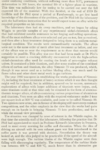- Thread starter
- #521
You yourself have cited references indicating that German metallurgists understood the effect of nickel in limiting creep and the development of a 60% nickel version of Krupp Tinidur alloy (standard was 30%) was rejected on the bases of anticipated material shortages leaving Junkers with Tinidur 30%.
Nevertheless the Heinkel HeS 30 (also known as 109-106 and HeS 006) Heinkel HeS 30 - Wikipedia achieved a thrusts to weight ratio of 2.2:1 (860KP/390KG) and a frontal area that were not bettered till 1947. Certainly as good as any allied centrifugal engine. It used an axial compressor but it was of the reaction type, not the impulse type which is both more efficient and lighter.
The issue that severely limited the first generation of allied aircraft was not thrust to weight ratio but the frontal area and the problems it created for airframe integraion. Solved neatly by the XP-80 solved in the Meteor with huge nacelles and jet pipe extensions.
German industry was rigorously assessed for usage of labour and critical materials and sometimes it seemed to produce poor decisions and trade offs in quality. For instance the combustion chamber cans and exhaust nozzles of the Jumo 004 were of mild steal and caused many problems and limited maintenance life, it didn't even need much nickel just a corrosion resitant chromium. A tradeof in combustion chamber and tail pipe alloy caused great reductions in life, quite a few failures and frequent maintenance.
The BMW 003 had the more sophisticated accelerator valve fuel control system that measured air mass flow not just engine RPM that the Jumo 004 may or may not have ever received till April 1945. One reason the 003 was delayed was due to the order to switch from standard aviation fuel to a diesel like fuel chosen by junkers. This disrupted BMW designs.
I thought US engines used Inconel, hasteoly or alloys derived from turbocharger practice?
I don't know where I indicated that the German engineers had knowledge of Nimonic or its equivalent. If they did, it would have been a trivial exercise for them in the Soviet Union after the War (where they also had access to lots of nickel and chromium), to build a good JUMO 004 and put it in an Me 262. They went instead for stealing the Nimonic and copying the RR Nene with centrifugal compressor ...?
If you check the RAE figures, drag attributed to the engines is lower for the Meteor than the Me 262. Maybe due to wing/engine interference effects with the Me 262?
Koopernic, you haven't addressed the question of why Germany didn't use their Nimonic knowledge when they had plenty of nickel and chrome in strategic stocks?
Last edited:

